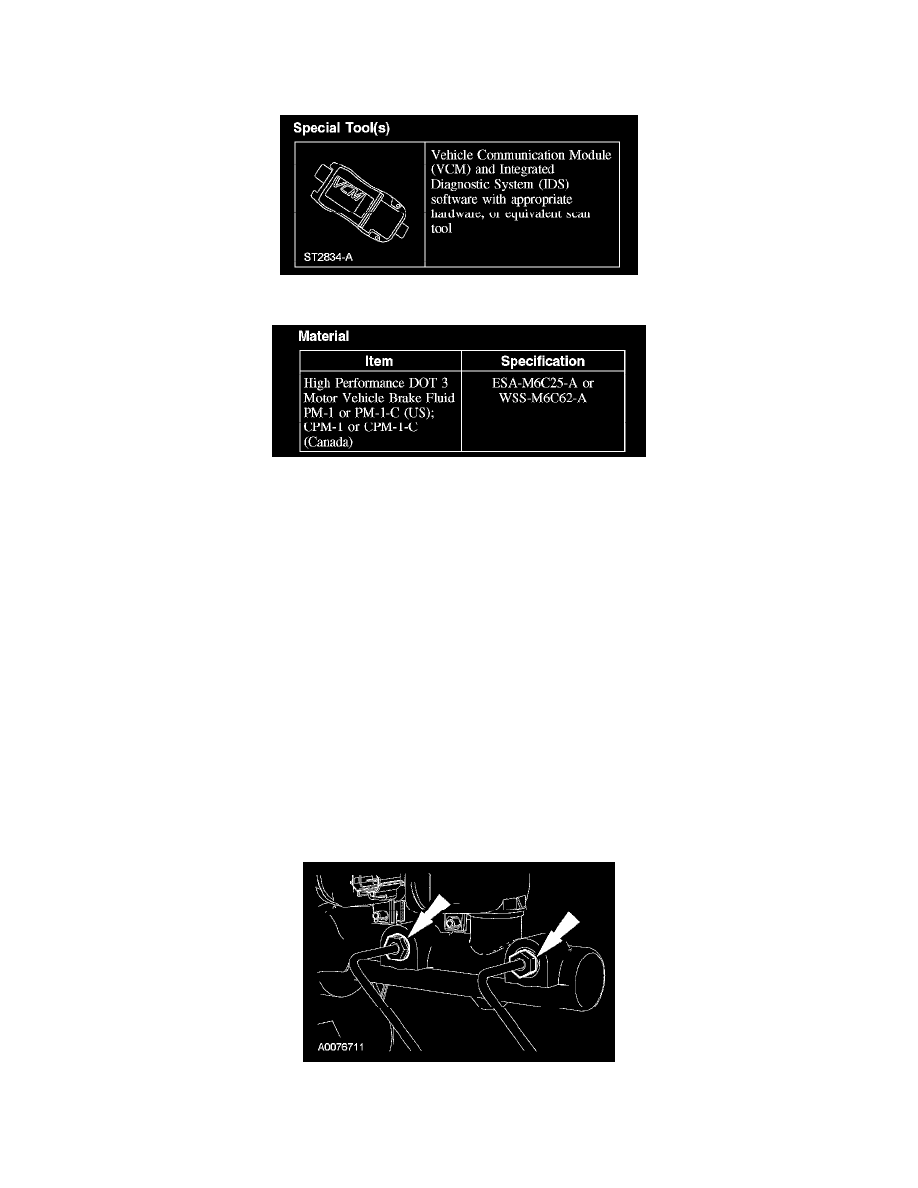Explorer Sport Trac 4WD V8-4.6L VIN 8 (2007)

Brake Bleeding: Service and Repair
Brake System Bleeding
Brake System Bleeding
Special Tools
Material
Master Cylinder Bleeding
WARNING: Carefully read cautionary information on product label. For EMERGENCY MEDICAL INFORMATION seek medical advice.
In the USA or Canada on Ford/Motorcraft products call: 1-800-959-3673. For additional information, consult the product Material Safety
Data Sheet (MSDS) if available. Failure to follow these instructions may result in personal injury.
CAUTION: Do not allow the brake master cylinder reservoir to run dry during the bleeding operation. Keep the brake master cylinder
reservoir filled with the specified brake fluid. Never reuse brake fluid that has been drained from the hydraulic system.
CAUTION: Brake fluid is harmful to painted and plastic surfaces. If brake fluid is spilled onto a painted or plastic surface, immediately wash
it with water.
NOTE: When any part of the hydraulic system has been disconnected for repair or new installation, air may get into the system and cause spongy brake
pedal feel. This requires bleeding of the hydraulic system after it has been correctly connected. The hydraulic system can be gravity bled, manually bled
or bled using pressure bleeding equipment.
1. NOTE: When a new brake master cylinder has been installed or the system has been emptied or partially emptied, it should be primed to prevent
air from getting into the system.
Disconnect the brake master cylinder tubes.
2. NOTE: Original equipment tubes are not intended to be used during this procedure.
Install the 2 short brake tubes with the ends submerged in the brake master cylinder reservoir and fill the brake master cylinder reservoir with
clean, specified brake fluid.
